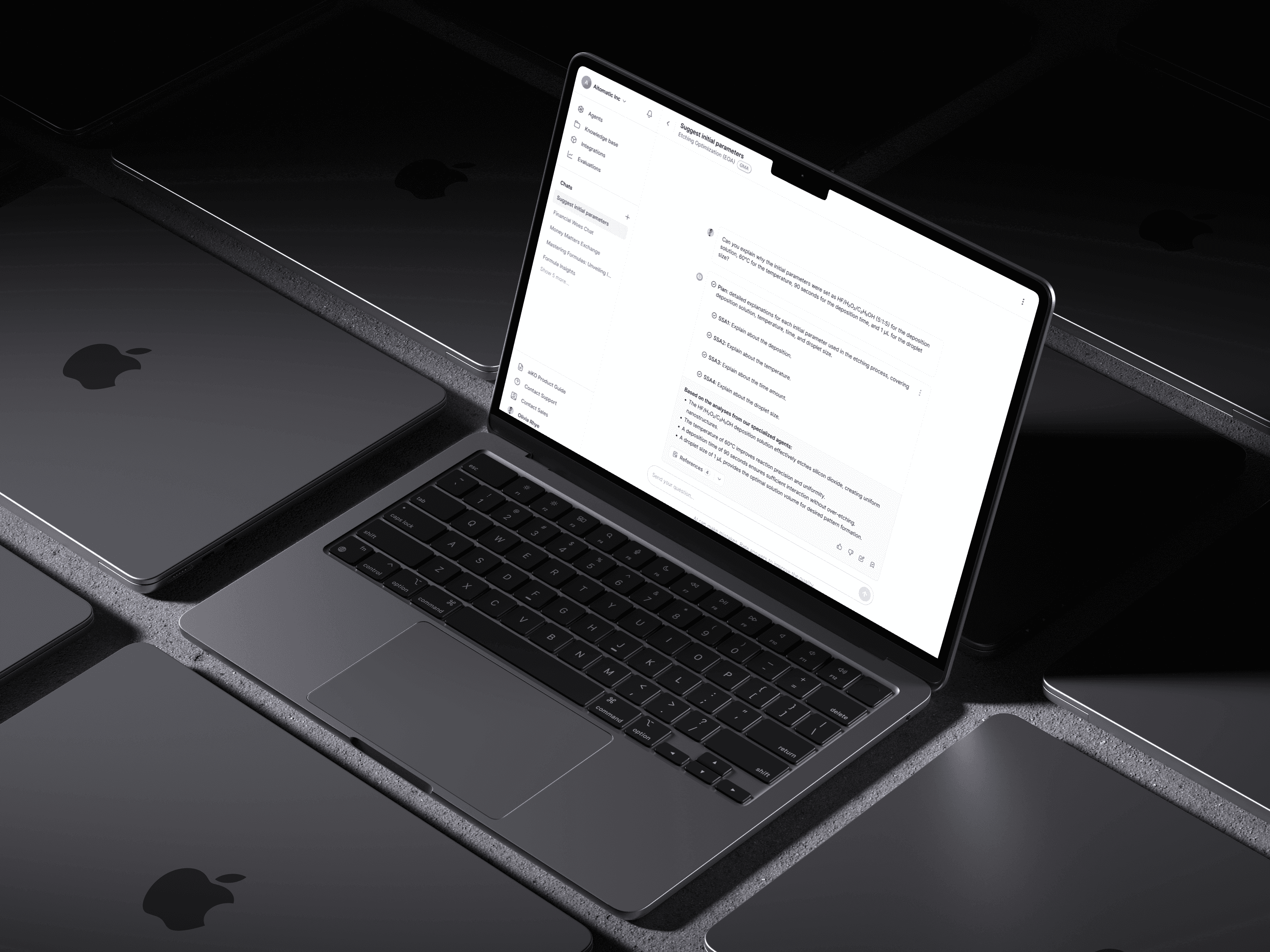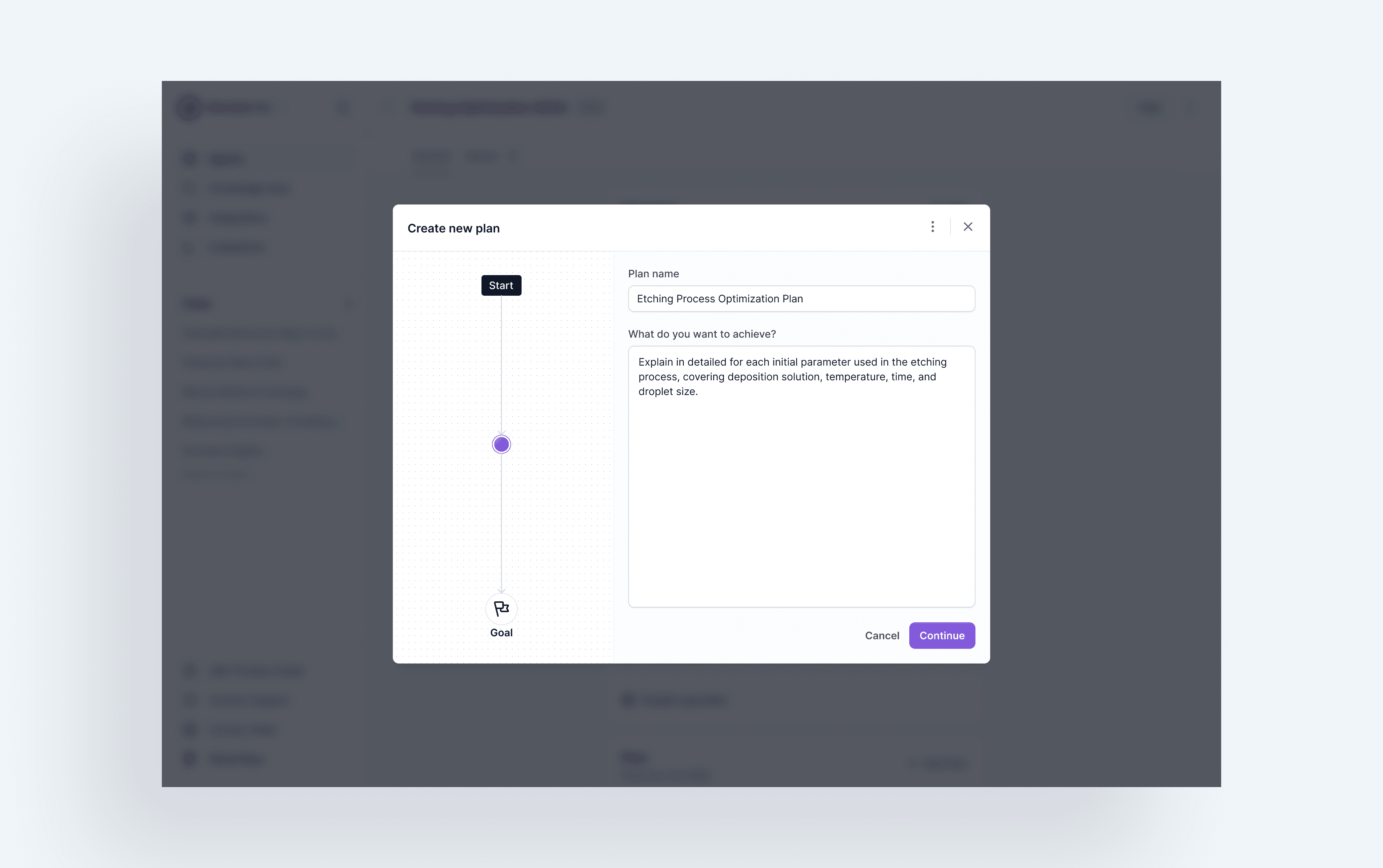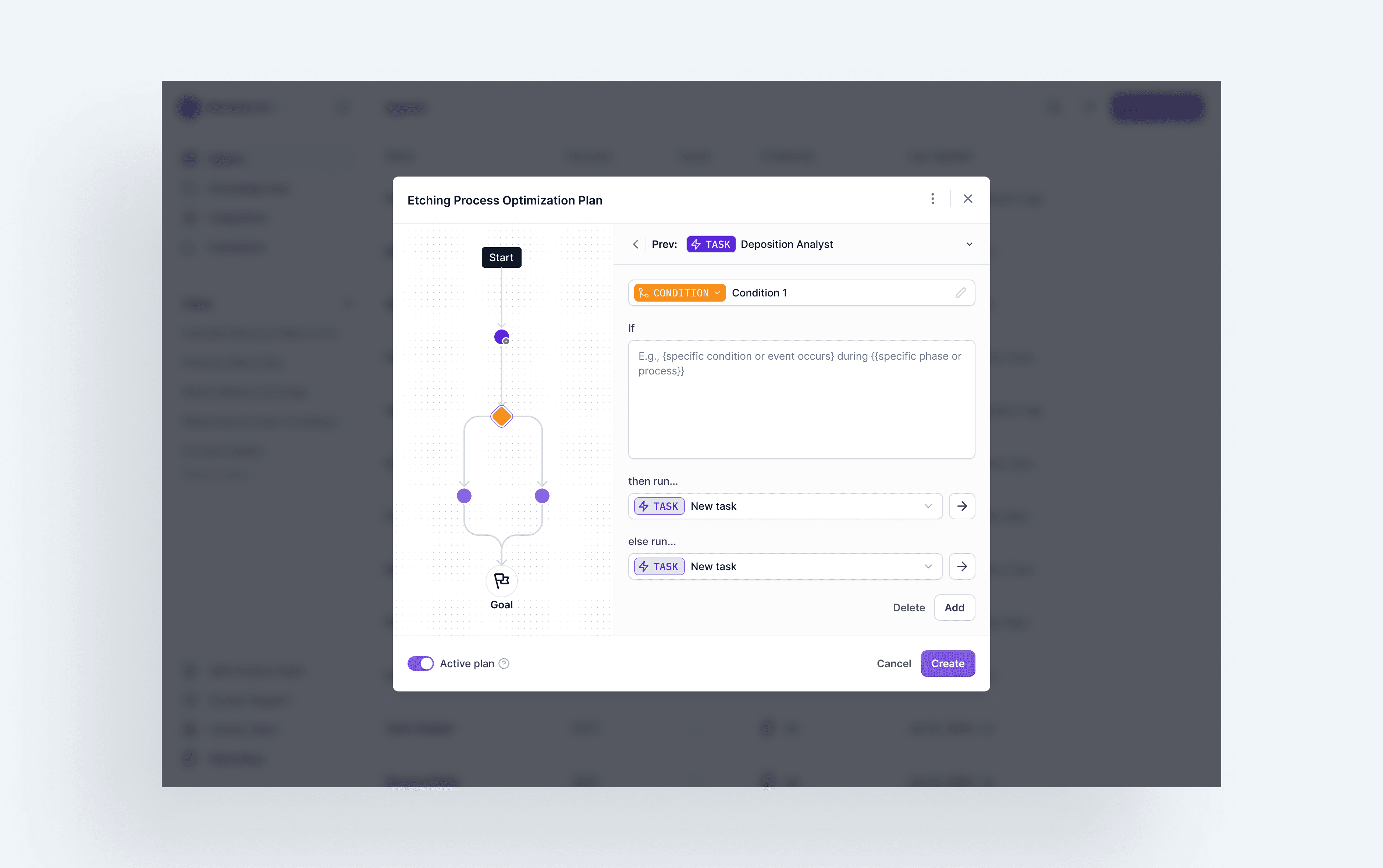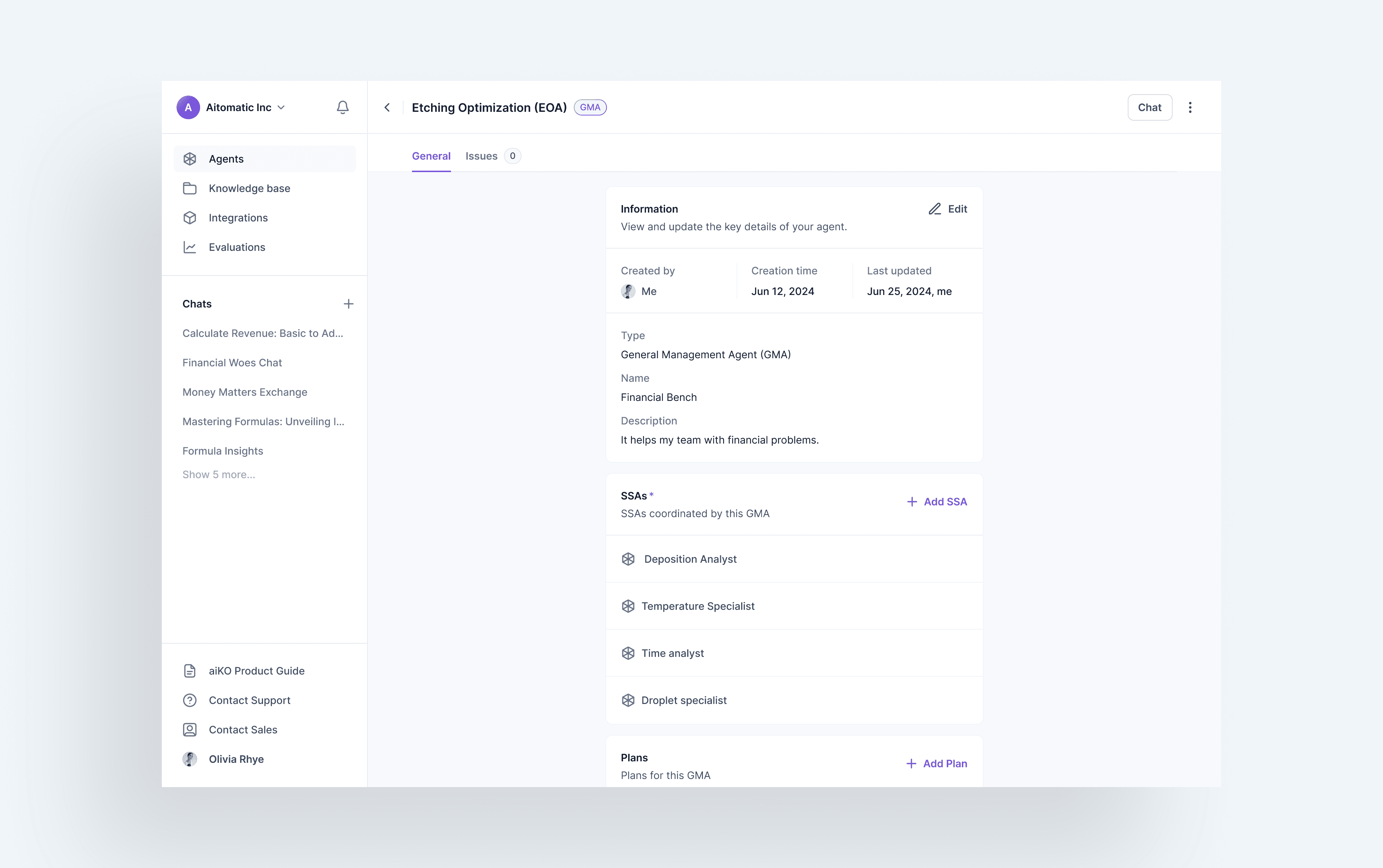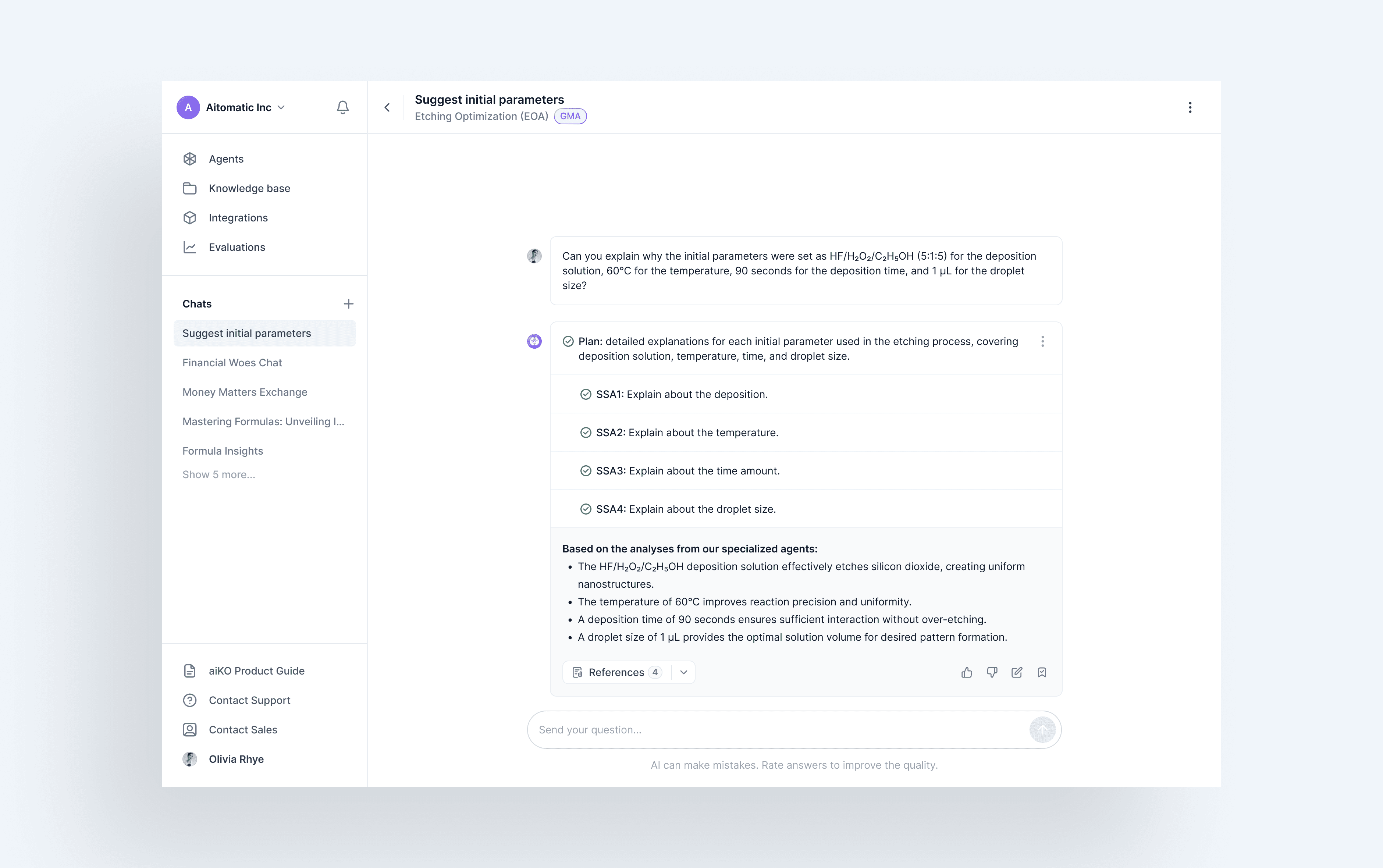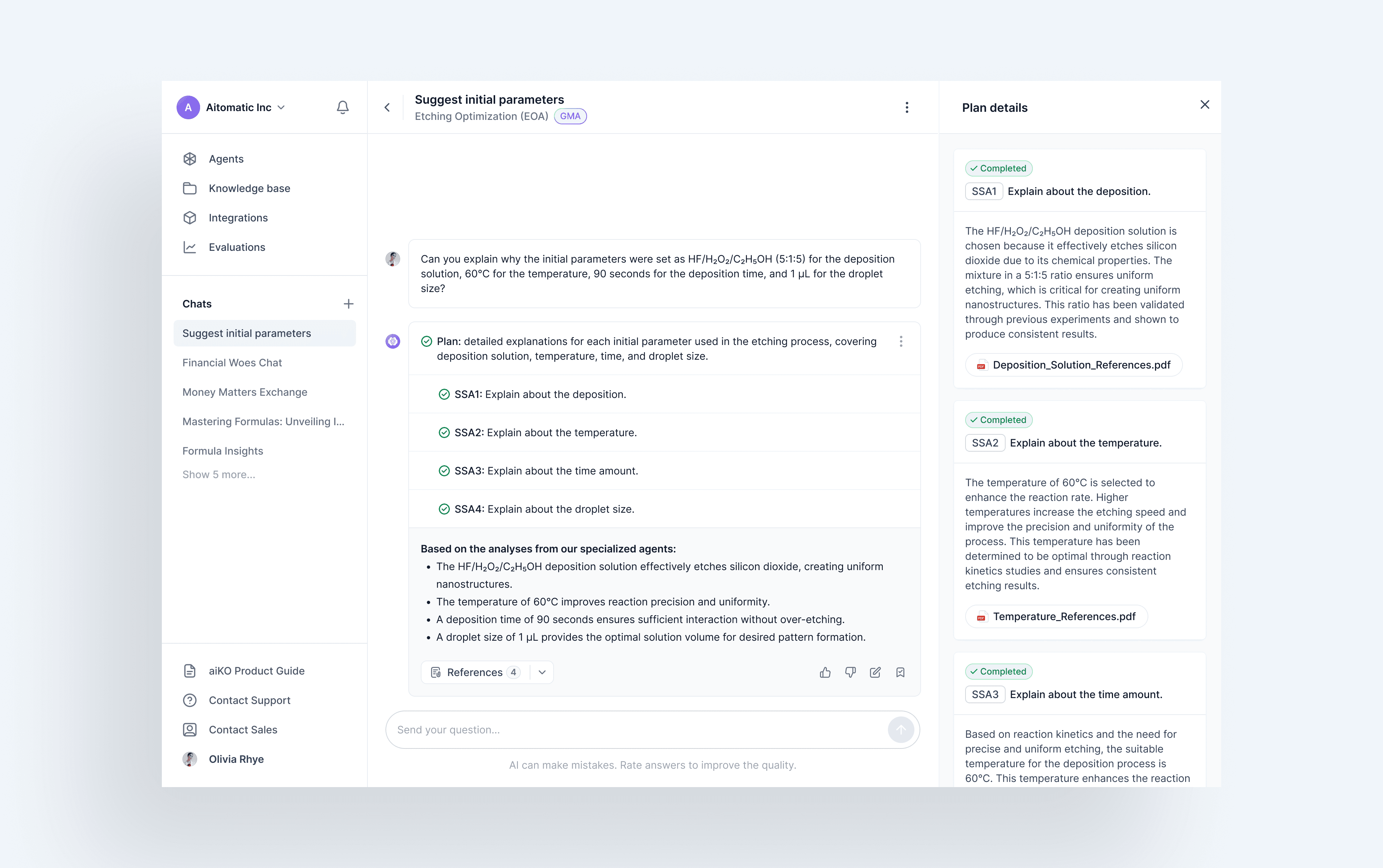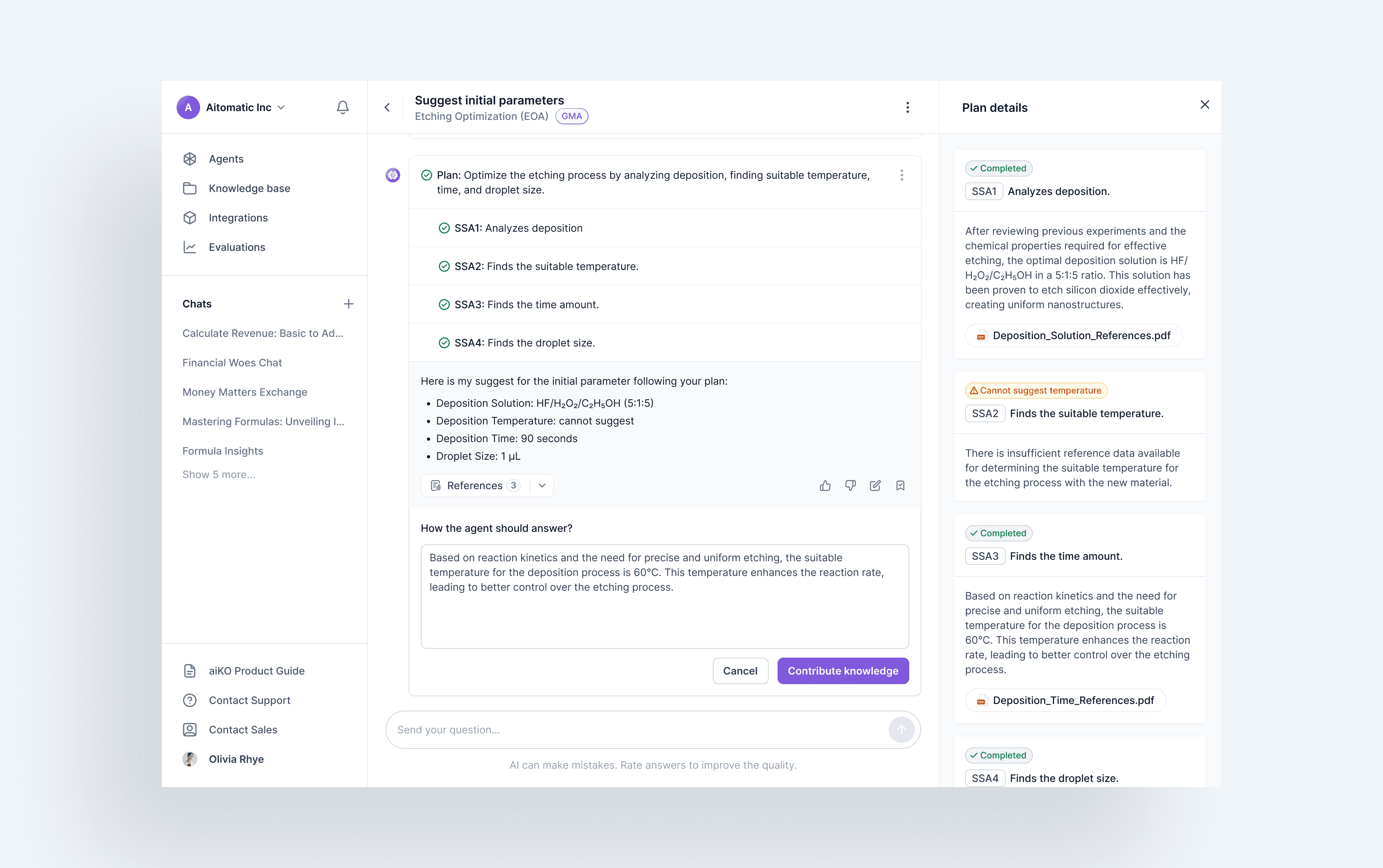Overview: Bringing Clarity to Process Engineers
In semiconductor manufacturing, precision is everything. Engineers responsible for the etching process must balance variables like temperature, pressure, and time to achieve optimal results on silicon wafers. Yet, the tools available to them often increase cognitive load, forcing them to juggle multiple datasets and inconsistencies across machines—leading to a cycle of trial-and-error. This process is not only time-consuming but mentally exhausting.
The GMA (General Management Agent) and SSA (Small Specialized Agents) system was designed to act as a co-pilot in this complex environment—taking the burden off engineers and helping them focus on key decision-making.
The Problem: Constant Iterations and High Pressure
Process engineers endure a repetitive workflow that taxes both their time and mental energy:
Receive Specifications: Engineers get detailed wafer outcomes like critical dimensions and materials.
Set Parameters: Based on experience, engineers adjust etching parameters—temperature, pressure, flow rates—but it’s an educated guess.
Run Tests: They monitor and adjust settings during the process, sometimes across multiple machines.
Analyze Results: SEM and EUV images reveal whether outcomes match expectations, often uncovering deviations.
Adjust and Repeat: Engineers iterate multiple times to get desired results.
Standardization Struggles: Even when they succeed, replicating the process across machines is inconsistent.
This repetitive process leads to delays, frustration, and mounting pressure to meet tight deadlines. The goal of the GMA/SSA system was to streamline this process—making it faster, smarter, and less mentally draining for engineers.
Approach: Crafting a Human-First, AI-Assisted Workflow

The design of GMA/SSA focused on reducing cognitive load while keeping engineers in control:
Specialized Agents: Each SSA handled a specific aspect of the etching process, offering insights on parameter adjustments based on previous performance data, always giving engineers the final say.
Contextual Suggestions: SSAs provided explanations with their recommendations, building trust. For example, if plasma power adjustments were needed, the system explained the impact on wafer surface, rooted in historical data.
Visualized Workflow: Engineers could interact with the GMA/SSA system through an intuitive, visual interface. They could dynamically adjust workflows, with visual prompts guiding them through critical areas needing attention.
Execution: From Concept to Reality
I spent days studying process engineers’ workflows and immersing myself in technical papers on etching processes. This allowed us to map out exactly where AI could assist without disrupting established workflows.
From there, we built mock interfaces, enabling engineers to interact with the AI like a trusted colleague. Each prototype was rigorously tested and refined based on real feedback from the engineers, ensuring that the system fit seamlessly into their existing process.
Impact: Redefining the Process Engineer’s Workflow
For process engineers at our customer’s company, the GMA/SSA system provided immediate, tangible relief:
Faster Setups: Engineers significantly reduced parameter setup time, cutting test cycles and achieving results faster.
Focus on Decision-Making: With tedious tasks like wafer analysis and data interpretation handled by SSAs, engineers could focus on strategic decisions.
Consistent Outcomes: The system applied correct parameters across multiple machines, reducing variability in results.
For engineers, GMA/SSA didn’t just save time—it gave them peace of mind. They could trust the system to provide reliable insights while maintaining the same level of control over their processes.
Reflection: Elevating the UX in High-Stakes Environments
This project changed my perspective on designing for high-stakes environments. Engineers didn’t need AI to replace them—they needed AI to amplify their abilities, reducing their mental strain while maintaining control.
I learned that great design is about deeply understanding the user’s workflow and emotional state. When you can design tools that empower people to work smarter with more impacts, you could make a difference in their professional lives.
